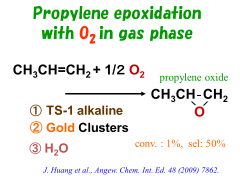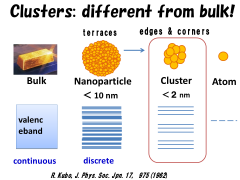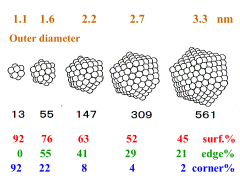Research
Outline
Gold was regarded as an inactive element for longer than a century. However, it exhibits unique catalytic properties when deposited as nanoparticles (NPs) below 5 nm in diameter on a variety of materials such as oxides, carbides, and sulfides of transition metals, carbons, and organic polymers. The catalytic performance of gold NPs and clusters with diameters smaller than 2 nm has been explored extensively for reactions of both gases and liquids. Supported gold catalysts are useful for air cleaning at room temperature and for green production of bulk and fine chemicals. Supported gold clusters are expected to open a door for simple chemistry, which enables us to selectively produce what we need. We are currently investigating the size and structure specificity of gold and exploring suitable support materials for selected target reactions.
Contents
1) Air purification at room temperature catalyzed by gold nanoparticles
We have investigated the performance of gold catalysts supported on fabric filter for indoor air purification, in particular, for CO and HCHO removal. It is also explored whether the catalyst life can be prolonged by combination with oxygen plasma.
2) Challenge against highly difficult reactions catalyzed by gold clusters
Gold shows potential capability for ideal reactions. For example, propylene oxide (PO) can be produced with molecular oxygen alone when the following three requirements are fulfilled: first titanium silicalite-1 treated with alkaline as a support, second gold clusters smaller than 2 nm in diameter, and water as a gas phase promoter. At the present stage of our study, conversion is 1 to 3 %, selectivity is around 50 %. Industrial applications need 10 % conversion, 80 % selectivity.
3) Structures and properties of gold clusters
We are attempting to prepare gold clusters composed of specific atomic number and structures by using organometallic complex and investigate their properties such as chemical, optical, magnetic, and affinity with biomolecules.
4) Selective catalytic reduction of NOx by NH3 (NH3-SCR)
EurekAlert!(2019)External Link
EurekAlert!(2020)External Link


